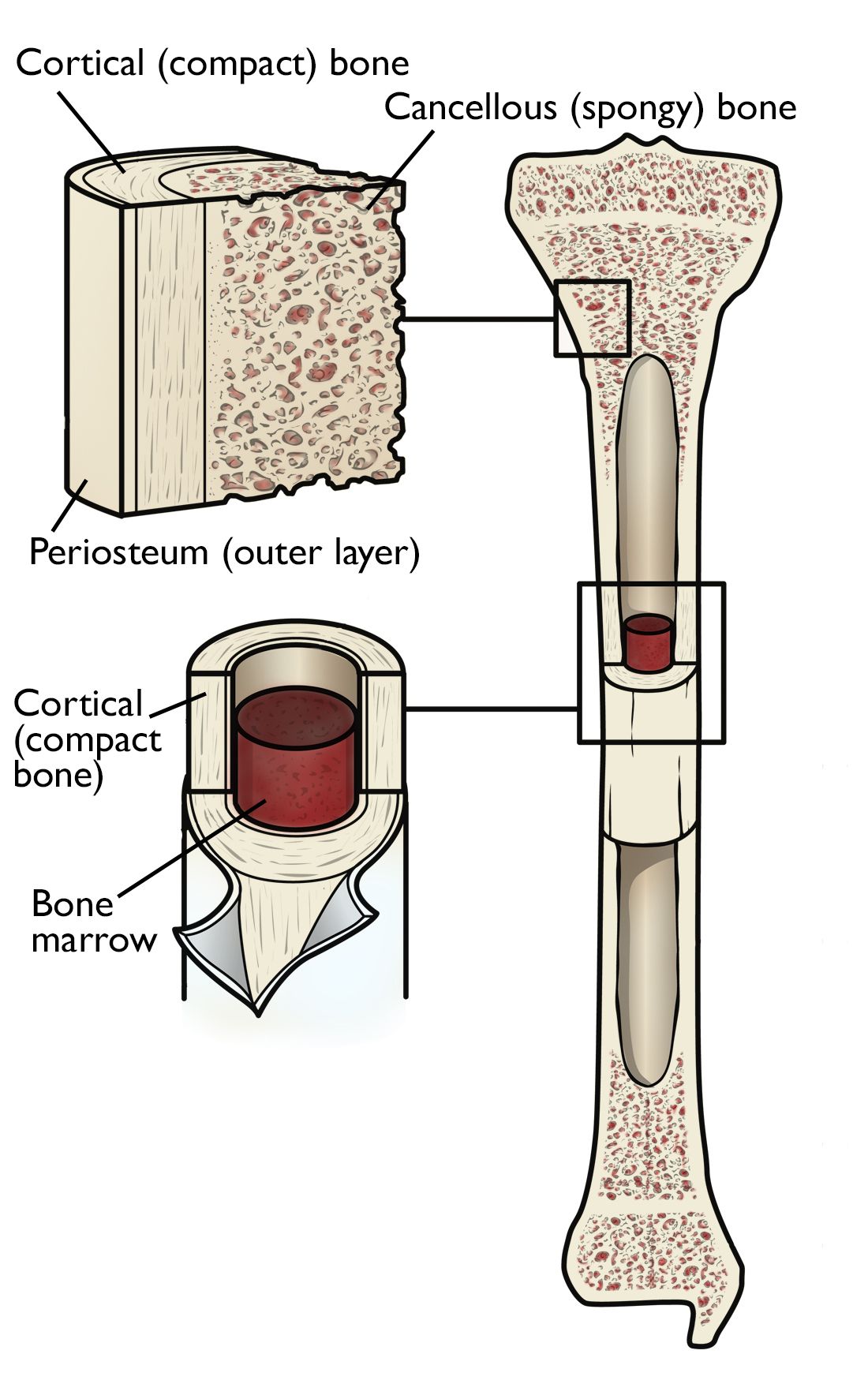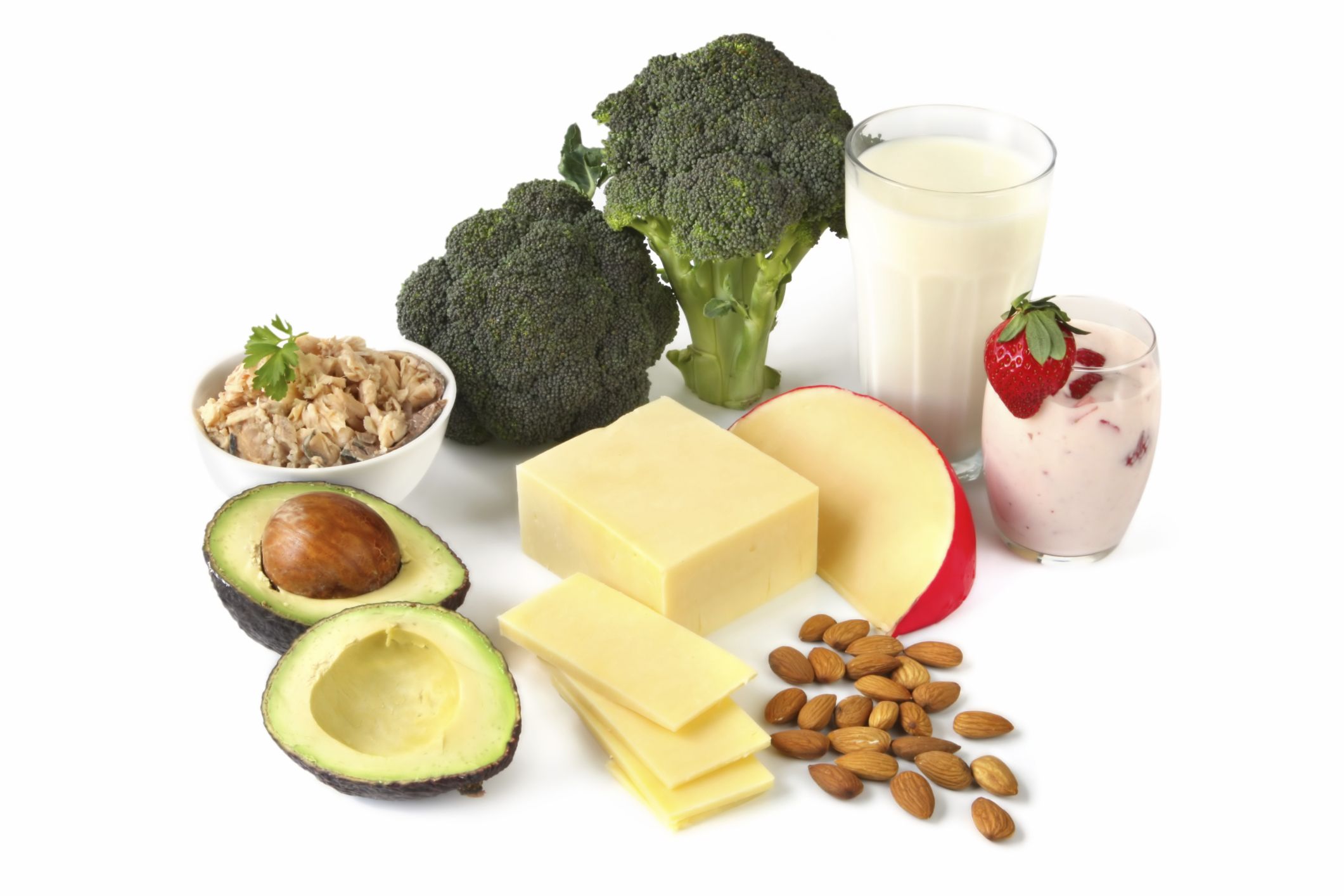Staying Healthy
Bone Health Basics
Bones give our bodies support, allowing us to use our muscles to walk, ride a bike, and hold a child. They protect our organs and store and release our supply of calcium. Calcium is a mineral necessary not only for building and maintaining strong bones, but also for the function of all the cells in our bodies.
In the last 15 years, we have learned a great deal more about bones — the way they work, grow, rebuild, weaken, and break. Most important, we have learned about bone metabolism and how bone constantly changes, rebuilding itself throughout our lives.
We now know that some people are at higher risk for osteoporosis (thinning of the bones) because their bone metabolism causes excessive bone loss and does not support sufficient rebuilding of bone. Proper nutrition and exercise are important to bone health but cannot solve this metabolic problem. Doctors, however, can now provide treatment for people who have or are at risk of developing weak bone.
According to the National Institutes of Health (NIH), half of all Americans over age 50 have weak bones. The good news: No matter how old we are, there are many things we can do to prevent bone loss and even build new bone.
Bone Basics
Importance of Bones
Bones and the skeleton play many important roles in the body, including:
- Storing and supplying calcium as needed for all the cells and organs of the body when dietary sources are not adequate
- Providing our bodies with support and muscle attachments, which allow us to move and use our limbs, trunk, and head
- Enclosing and protecting our vital organs
- Providing space for bone marrow, where all types of blood and bone cells are made
Bone cells can respond rapidly to their environment.
- Increased stress, such as weightbearing exercises, can strengthen the structure of individual bones to resist fracture.
- Lack of stress, such as bed rest or weightlessness in space, can rapidly weaken bone.
While the outside of a bone looks like rock, the inside more closely resembles lacy coral surrounded by a hard, thick shell. Unlike rock, bone is living tissue that is constantly changing. Complex functions occur within what appears to be a solid structure.
Bone Remodeling
- The body's skeleton forms and grows to its adult size in a process called modeling.
- The skeleton then completely regenerates — or remodels — itself about every 10 years. Remodeling removes old pieces of bone and replaces them with new, fresh bone tissue. This process keeps the bone and its cells healthy and strong, and it allows the bones to supply calcium to the body.
Keeping the skeleton in good repair requires a balance between removal and replacement of bone tissue.
- In young, healthy adults, the amount of bone removed and replaced is about the same. This is called balanced bone remodeling.
- As we age, the remodeling process can shift out of balance, resulting in loss of bone structure and strength. This can lead to bone diseases, including osteoporosis. Learn more: Osteoporosis
Nutrition and Bone Health
Good nutrition is essential to ensuring that the body has the protein, minerals, and vitamins needed to make and regenerate bone.
Calcium, phosphorus, zinc, and magnesium are necessary minerals that must come from our diets. Vitamins D, K, and A are also needed for normal bone metabolism. Without these nutrients, our bones can become weak and more likely to break.
Calcium and Vitamin D are well known for the important role they play in building strong bones. The skeleton is our body's major storage bank for calcium, and Vitamin D helps our bodies effectively absorb calcium from our diets. Vitamin D is also needed to help bone-forming cells mineralize bone proteins into a hard tissue. Learn more: Vitamin D for Good Bone Health
If we do not have enough calcium in our diets to supply calcium to all the body cells that need it, calcium is removed from the skeleton. Osteoporosis, the most common bone disease, can be worsened by a lack of calcium and other minerals.
Dairy products like yogurt and cheese, as well as cereals, soy products, and green leafy vegetables, are great sources of calcium. Calcium supplements can also help if you generally avoid dairy products. Learn more: Calcium, Nutrition, and Bone Health
Recently, there have been concerns about calcium building up in blood vessels, leading to atherosclerosis (hardening of the vessels). This does not happen unless the blood vessel is already diseased. Restricting recommended calcium intake in either diet or supplement form, therefore, does not prevent atherosclerosis.
It is believed that dietary sources of calcium are generally safer than supplements, decreasing the likelihood of kidney stones, and that it is possible to get all the necessary calcium from diet alone. Beginning at around age 50, the adult body needs a daily intake of about 1,200 mg of calcium to prevent bone loss.
Physical Activity and Bone Health
Staying active and following a regular exercise program are important to maintaining healthy bones. Weightbearing exercise is especially important for maintaining bone strength and preventing osteoporosis.
The term "weightbearing" describes any activity you do on your feet that works your bones and muscles against gravity. Regular weightbearing exercise — such as brisk walking, dancing, climbing stairs, or jogging — turns on your body's bone-forming cells and helps bones become stronger.
Weightbearing physical activity can slow bone loss in older people. Maintaining muscle mass also preserves and strengthens surrounding bone and helps prevent falls.
Learn more: Exercise and Bone Health
Maintaining Bone Health as You Age
As we age, our bones are affected by genetics, nutrition, exercise, and hormonal loss. We cannot change our genes, but we can control our nutrition and activity level and, if necessary, take osteoporosis medications. You are never too old or too young to improve your bone health. Learn more: Osteoporosis Prevention and Treatment
Bone can get either stronger or weaker over time, depending on how we take care of it.
- Before age 25, especially around the time of puberty and early adulthood, we can make bigger, thicker bones through weightbearing exercise and good nutrition.
- After age 25, weightbearing exercise can help decrease bone loss and maintain bone mass and strength, but it cannot make bigger bones. Bone density in adults can be increased only 1 to 2 % in specific weightbearing bones with regular exercise and can be lost once exercise is stopped. That is why it is so important to build maximum peak skeletal size and strength during growth: A bigger skeleton at the end of growth helps protect against age-related bone loss.
Tips for Healthy Bones
Each year, approximately 2 million older Americans sustain fractures because of weak bones, leading to temporary or permanent disability, and even death. The incidence by 2025 is predicted to be 3 million.
There are 300,000 hip fractures in the U.S. yearly, and half of these people do not regain their pre-fracture activity level. Fortunately, there are things you can do to maintain and even improve your bone strength:
- Understand your individual risk for fracture. This is based on any risk factors you have — such as age, smoking or vaping, a history of falls, diabetes, inflammatory and autoimmune diseases, certain medications that cause bone loss, and your bone density. Ask your doctor if you need a bone density test.
- Understand your individual risk for bone loss. Genetics plays a large role in bone health, and some people have genetically determined high rates of bone turnover after menopause or with aging. Bone metabolism testing can provide additional information about your risk for fracture. It can also be used to ensure that you are responding to osteoporosis medications.
- Be active every day. Strength-building and weightbearing activities help build strong bones. Children should exercise at least 1 hour each day, and adults should get 30 minutes of daily activity. Learn more: Exercise and Bone Health
- Maintain a healthy weight. Older adults who are overweight have a higher risk of falling. Being underweight raises the risk of bone loss and fractures.
- Get enough calcium and Vitamin D. The health of our bones depends on steady stream of nutrients, most calcium and Vitamin D. Learn more: Calcium, Nutrition, and Bone Health and Vitamin D for Good Bone Health
- Do not smoke. Smoking can reduce bone mass and increase your risk for a broken bone, and nicotine inhibits bone-forming cells. Studies also show that vaping may increase the risk of fractures and osteoporosis, and that people who smoke cigarettes and vape have a higher risk of fractures than people who only smoke cigarettes. Learn more: Smoking and Musculoskeletal Health
- Limit alcohol use. Heavy alcohol use reduces bone mass and increases your risk for falls and broken bones.
- Reduce your risk of falling. Exercise can help reduce your risk of falling. There also are many changes you can make in your home to help prevent a fall. Remove obstacles and add safety features — such as grab bars and non-slip mats — where needed. Learn more: Guidelines for Preventing Falls
- Consider bone-boosting medications. In addition to calcium and Vitamin D supplements, there are many medications available to help slow bone loss and increase bone strength. There are also medications that can build completely new bone and repair lost architecture. Talk to your doctor about these methods for protecting your bones. Learn more: Osteoporosis Prevention and Treatment
Contributed and/or Updated by
Peer-Reviewed by
AAOS does not endorse any treatments, procedures, products, or physicians referenced herein. This information is provided as an educational service and is not intended to serve as medical advice. Anyone seeking specific orthopaedic advice or assistance should consult his or her orthopaedic surgeon, or locate one in your area through the AAOS Find an Orthopaedist program on this website.









